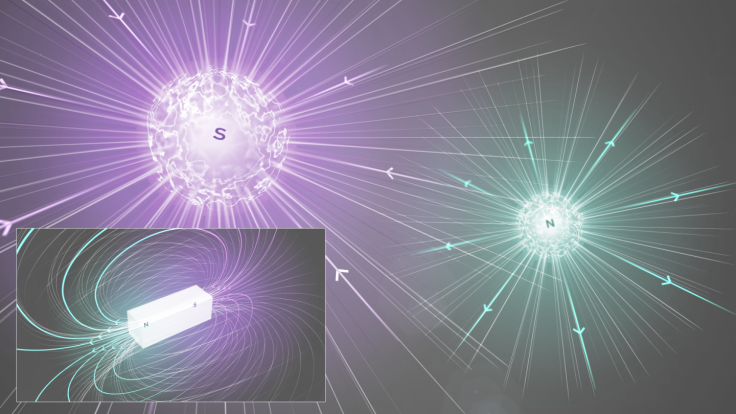Magnetic Monopoles: The Hunt For Magnetism’s Elementary Particle Begins

Magnets, for reasons we still do not understand, seem to exist only in the form of dipoles — ones with a north and a south end. Break a bar of magnet into two, and you still do not get a magnetic monopole. Instead, you now have two smaller magnets, each with its north and south pole.
Why is this so? After all, electricity, which seems, to a large extent, analogous to magnetism, has positive (protons) and negative (electrons) charges, and each of these can be isolated. How can scientists achieve something similar with magnetism’s elementary particles — the monopoles — which have remained infuriatingly elusive?
The answer, according to a team of researchers working with the MoEDAL experiment at the Large Hadron Collider (LHC), is to try to create them through high-energy particle collisions at the world’s largest particle collider.
“If monopoles exist, they are believed to be very massive. As the LHC produces collisions at unprecedented energy, physicists may be able to observe such particles if they are light enough to be in the LHC’s reach,” the European Organization for Nuclear Research (CERN) said in a statement released Wednesday. “Monopoles could manifest their presence via their magnetic charge and through their very high ionizing power, estimated to be about 4700 times higher than that of the protons.”
This is precisely what MoEDAL — short for Monopole and Exotics Detector at the LHC — experiment is designed to look for. Its test run took place in 2012, when it used 0.16 ton of aluminum detectors that act as a trap for monopoles, and its first real experiment phase, run in 2015, used 0.8 tons of aluminium.
According to a new paper published Wednesday in the Journal of High Energy Physics, the detectors are now free from other interferences and impurities that could obscure a monopole signature. Although the detectors are yet to discover an evidence for trapped monopoles, the results place new limits on the mass of these hypothetical particles.
“The paper published today is based on an analysis of data collected during the LHC’s first run, when the trapping detector was still a prototype,” CERN said in the statement. “[The results] provide a clear demonstration of the power of the MoEDAL detector, as the LHC delivers data at higher energy.”
If magnetic monopoles are finally detected, it would get rid of the current asymmetry between electricity and magnetism — something that bugs a lot of physicists — and prove, once and for all, that the two are truly analogous.
© Copyright IBTimes 2024. All rights reserved.





















